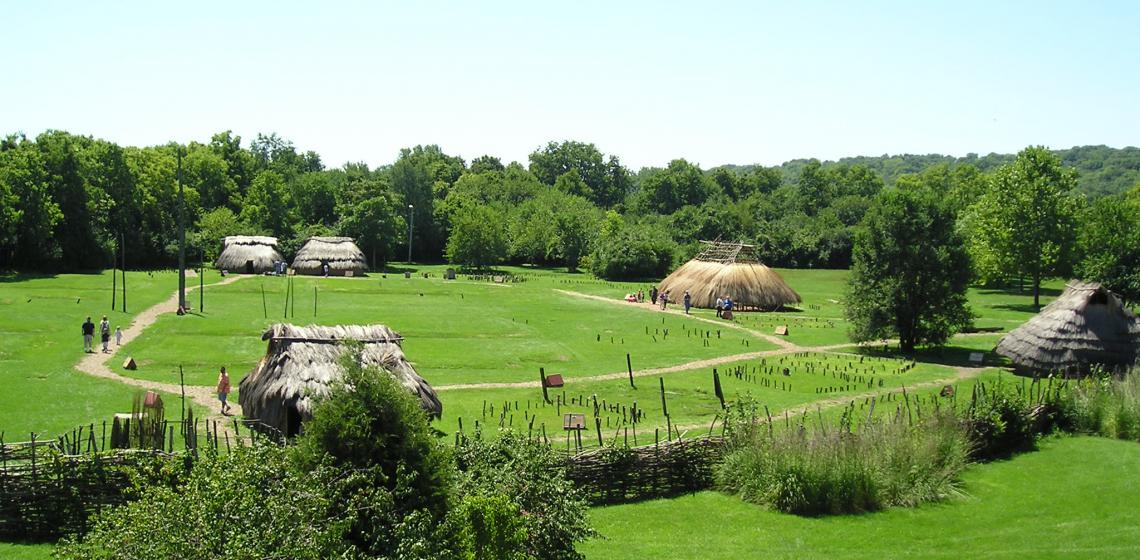Sunwatch Indian Village (US)

SunWatch, originally named the Incinerator Site, was first excavated and reported on in the 1960s. When news came in the early 1970s that the City of Dayton planned to expand a nearby sewage treatment plant onto the property and impact the site, the Dayton Museum of Natural History (now the Boonshoft Museum of Discovery) began excavations.
These revealed a planned, stockaded village which was estimated to have been occupied for about 20 years and included apparent astronomical alignments, hence the name SunWatch. The roughly 3 acre village site contained many well preserved artifacts, including fragile items such as crayfish pincers, fish scales, turkey egg shell fragments, and even uncharred wood remains.
With the cooperation of the City of Dayton the plans for the expansion of the sewage treatment plant were modified, and the site was saved from destruction. Soon after, planning began to interpret and open the site to the public.
Because of its archaeological and historical significance, SunWatch was placed on the National Register of Historic Places in 1975 and became a National Historic Landmark in 1990.
In 1988, SunWatch opened to the public. SunWatch currently combines experimental archaeological research, including the reconstruction of the Fort Ancient structures in their original 13th century locations, with an interpretive center that exhibits many of the artifacts that have been recovered from the site. The village reconstruction includes five lath and daub structures with grass thatch roofs, portions of a stockade, and a native garden and prairie with plants typical of the period. Inferred astronomical alignments originate from a complex of posts at the center of the village that have also been replaced.
Source: SunWatch.org
Photo by Andrew Sawyer a.k.a. Asawyer sunwatch
